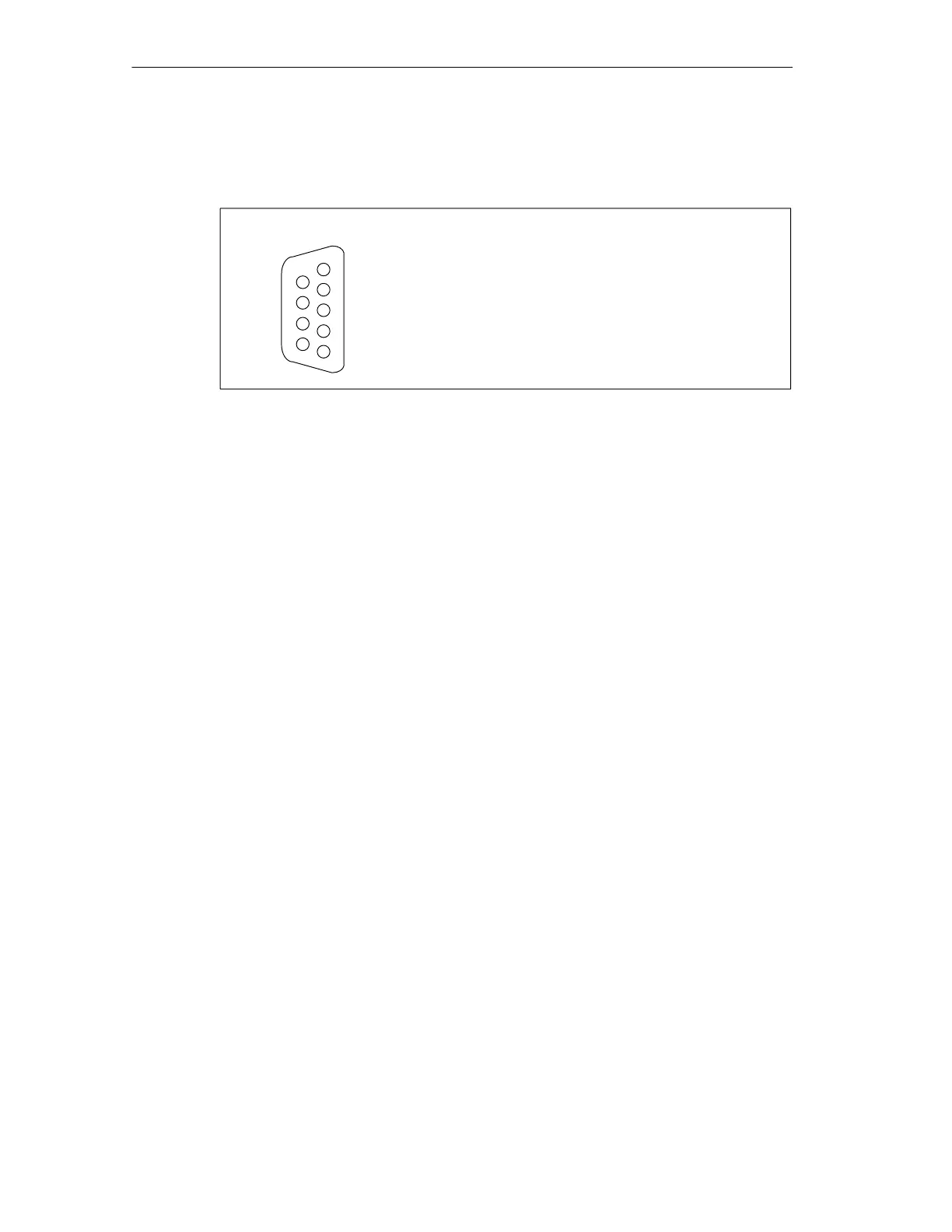S7-200 Specifications
A-52
S7-200 Programmable Controller System Manual
A5E00066097-02
DP Slave Port Connector
The pin-out for the DP slave port connector is shown in Figure A-27.
5
1
9
6
9-pin D Female Connector
Pin # Description
1
2
3
4
5
6
7
8
9
Chassis ground, tied to the connector shell
24V Return (same as M on terminal block)
Isolated Signal B (RxD/TxD+)
Isolated Request to Send (TTL level)
Isolated +5V Return
Isolated +5V at 90 mA
+24V (120 mA maximum, with reverse voltage protection diode)
Isolated Signal A (RxD/TxD-)
No Connection
9-Pin Sub D Connector Pin-out
Note: Isolated means 500V of isolation from digital logic and 24V input power.
Figure A-27 Pin-out for the DP Slave Port Connector
Distributed Peripheral (DP) Standard Communications
PROFIBUS-DP (or DP Standard) is a remote I/O communication protocol defined
by the European Standard EN 50170. Devices that adhere to this standard are
compatible even though they are manufactured by different companies. DP stands
for distributed peripherals, that is, remote I/O. PROFIBUS stands for Process Field
Bus.
The EM 277 PROFIBUS-DP module has implemented the DP Standard protocol
as defined for slave devices in the following communication protocol standards:
• EN 50 170 (PROFIBUS) describes the bus access and transfer protocol and
specifies the properties of the data transfer medium.
• EN 50 170 (DP Standard) describes the high-speed cyclic exchange of data
between DP masters and DP slaves. This standard defines the procedures for
configuration and parameter assignment, explains how cyclic data exchange
with distributed I/O functions, and lists the diagnostic options which are
supported.
A DP master is configured to know the addresses, slave device types, and any
parameter assignment information that the slaves require. The master is also told
where to place data that is read from the slaves (inputs) and where to get the data
to write to the slaves (outputs). The DP master establishes the network and then
initializes its DP slave devices. The master writes the parameter assignment
information and I/O configuration to the slave. The master then reads the
diagnostics from the slave to verify that the DP slave accepted the parameters and
the I/O configuration. The master then begins to exchange I/O data with the slave.
Each transaction with the slave writes outputs and reads inputs. The data
exchange mode continues indefinitely. The slave devices can notify the master if
there is an exception condition and the master then reads the diagnostic
information from the slave.

